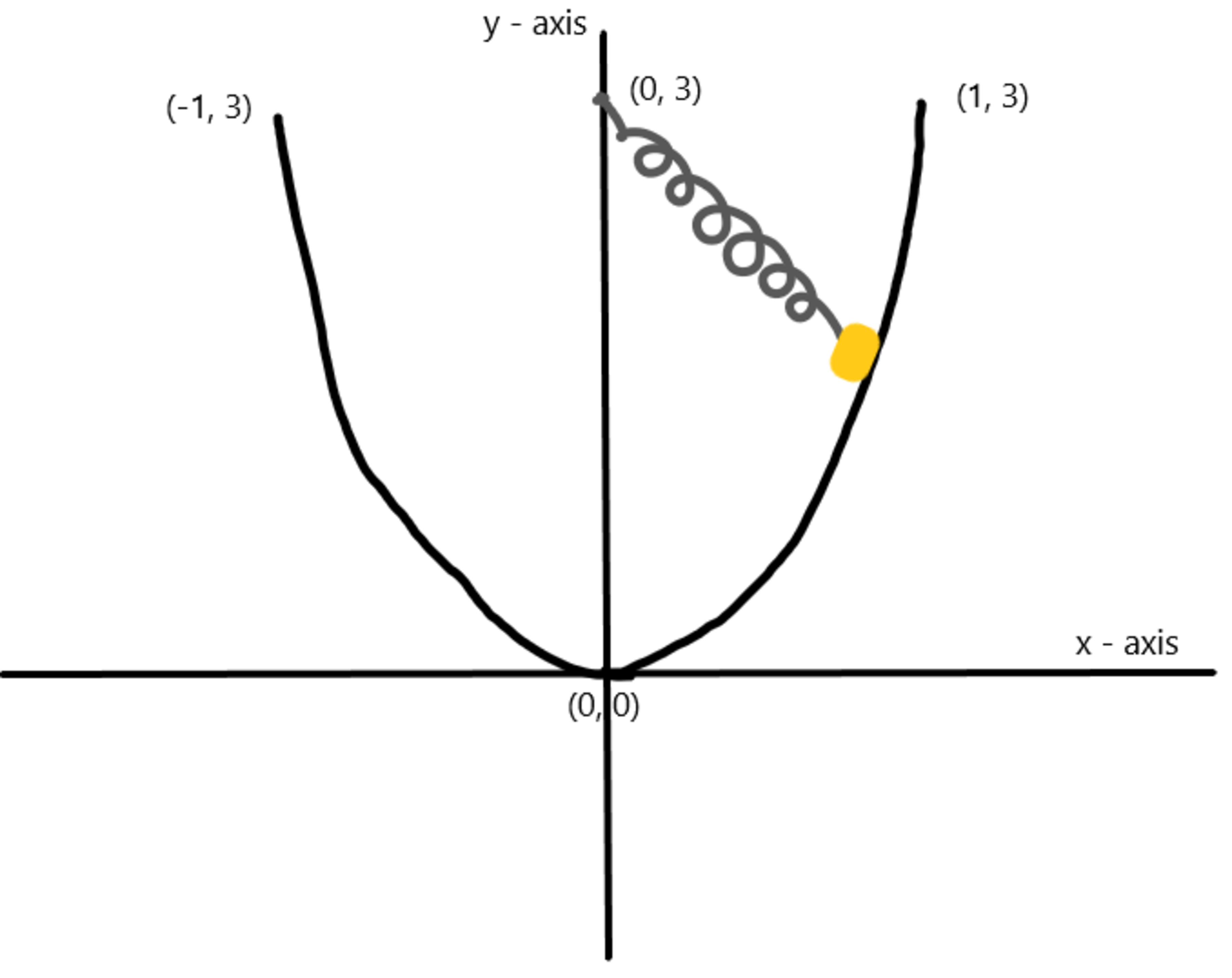Simulating Dynamics - 4
Difficulty level: about as hard as Liszt's Transcendental études
This is a very complicated problem. Consider yourself warned 😈
Consider a block sliding on a parabola with friction. Except, this time, there is a spring attached to the block which is hinged to the point as it is sliding! A diagram is shown below:

The block starts at time seconds at the point , sliding down the parabola from then on. There is friction on the parabolic ramp, and the force of the friction is , depending on the direction of the velocity, where is the magnitude of the normal force to the ramp.
Here's the problem:
Find the time when the block first stops. Let that time be . Without stopping the timer, find the time it takes (from ) for the block to stop for the second time. Let that value be .
Now, enter your answer as
Important clarifications:
- The natural length of the spring is meter.
- The spring constant of the spring is
- There is ambient gravitational acceleration, .
- The mass of the block is
- The equation of the parabola is
- The coefficient of friction of the ramp is
The answer is 3.67.
This section requires Javascript.
You are seeing this because something didn't load right. We suggest you, (a) try
refreshing the page, (b) enabling javascript if it is disabled on your browser and,
finally, (c)
loading the
non-javascript version of this page
. We're sorry about the hassle.
Derive an acceleration constraint equation:
y = 3 x 2 y ˙ = 6 x x ˙ y ¨ = 6 x x ¨ + 6 x ˙ 2
Now write the Newton's Second Law equations. In these, u 1 is the normal vector which can be calculated using standard techniques, and u 2 is a unit vector in the opposite direction as the particle velocity. F g is the gravitational force, and F s is the spring force . N is the magnitude of the normal force.
x ¨ = ( F g x + F s x + N u 1 x + μ N u 2 x ) / m y ¨ = ( F g y + F s y + N u 1 y + μ N u 2 y ) / m
Plug these two equations into the acceleration constraint equation to solve a single equation for N . Then knowing N , calculate the acceleration components. This approach requires a bit of algebraic manipulation, but does not require any calls of a linear algebra routine. Numerical integration takes care of the rest.
Simulation code is attached. Results are printed at the very end.